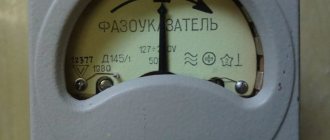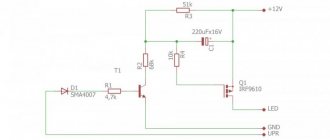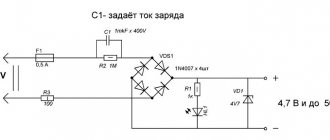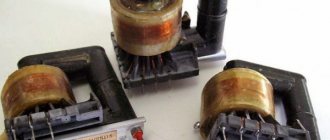What is TEG
This device makes it possible to generate electricity from heat energy.
It should be clarified that the expression “Thermal energy” is not entirely correct, since heat is a method of release and is not a separate type of energy. This definition denotes the general kinetics of structural elements:
- molecules;
- atoms;
- other particles that are part of the substance.
Thermoelectric generators for industrial applications
The heat source most often used for modern industrial TEGs is the thermal energy released during the combustion of natural gas. Thermal energy removed from internal combustion engines, thermal energy of steam, and other available heat sources at industrial facilities are also used. The output power of generators is determined by the type and number of thermoelectric modules included in the generator, as well as the design of the radiators. The line of TEGs produced for industrial use provides the ability to obtain electrical power from 2 to 200 W from one generator. It should be noted that the manufacturer indicates the output power for the worst operating conditions and on average you can expect results that exceed the guaranteed ones by one and a half times or more. If the matching conditions are met, the generated power from several generators can be summed up.
In a simplified form, a thermoelectric generator can be represented as a metal heat distribution plate on the side of the heat source, a thermoelectric generator module (TGM) and a cooling radiator that removes heat passing through the module into the environment and creates the temperature difference necessary for the operation of the TGM (Fig. 1). The entire structure must be compressed with a force that ensures reliable transfer of heat from the source to the environment on the one hand and does not allow the permissible force to be exceeded during thermal expansion of the structure.
Rice. 1. Basic design of thermoelectric generator
The figure shows that compression is provided using threaded connections and a leaf spring. Springs can also be of a different design, for example twisted or disk. The purpose of the design is to ensure uniform compression force over a given temperature range. Due to its simplicity, the basic design is highly reliable and durable (service life can exceed 10 years).
The difference between TEG and TES
At thermal power plants, fuel is used to release steam from a liquid, which rotates the turbine of an electric generator.
With the help of a thermoelectric generator, electricity is generated without intermediary transformations.
Principle of operation
In the nineteenth century, one scientist discovered the emergence of an electromotive force in a closed circuit, when the temperature in the medium contacts antimony with a conductor.
By heating one of the contacts, a magnetic field arises, which causes an EMF. When the second contact is heated, the EMF flux changes in the opposite way.
By breaking the chain, the opposite potentials are fixed at its edges. This is the basic principle of operation of thermoelectric generators.
What you need to know when choosing a wind generatorGenerator from an asynchronous motor: diagram, table, instructions on how to make it yourself + photo from the master!
Do-it-yourself solar battery - step-by-step instructions on how to make and install a solar battery at home (photo and video instructions)
Twelve 12 years later, another physicist discovered the opposite effect. By passing current through the thermocouple circuit, temperature differences are created in the contacts.
In principle, these two effects are different sides of the same phenomenon, which makes it possible to directly obtain electricity from heat.
DIY making
You can make a thermoelectric generator with your own hands. For this purpose you will need some elements:
- Module capable of withstanding temperatures up to 300−400 °C.
- A boost converter whose purpose is to accept a continuous voltage of 5 V.
- A heater in the form of a fire, a candle or some kind of miniature stove.
- Cooler. Water or snow are the most popular available options.
- Connecting elements. For this purpose, you can use mugs or pans of different sizes.
The wires passing between the converter and the module must be insulated with a heat-resistant compound or conventional sealant. The device must be assembled in the following sequence:
- All that remains of the power supply is the housing.
- With the cold side, you need to glue the Peltier module to the radiator.
- Having previously cleaned and polished the surface, you need to glue the element on the other side.
- It is necessary to solder wires from the input of the voltage converter to the outputs of the plate.
In this case, for correct operation, the thermal generator must be endowed with the following characteristics: output voltage - 5 volts, output type for connecting a device - USB (or any other depending on preference), minimum load power must be 0.5 A. In this case, you can use any Type of fuel.
Checking the mechanism is quite simple. You can put several dry and thin twigs inside. Set them on fire, and after a few minutes connect some device, for example, a phone to recharge. Assembling a thermogenerator is not difficult. If everything is done correctly, it will last for many years on trips and hikes.
Prospects
At this time, they continue to carry out experiments, selecting the optimal thermocouples to increase the efficiency.
There is a high probability that soon the development of improving the quality of thermal elements will acquire the highest status in the production of material to increase the interaction of thermocouples, using high technologies:
- nanotechnology;
- quantization pits, etc.
It is quite possible to invent a completely different principle, using non-standard materials.
How to choose a solar power plant: ready-made solutions, operating principle, how to choose and install it yourself (photo + video instructions)Solar collectors for home heating: advantages, disadvantages, myths, truth and reviews from owners (130 photos + video)
Wind power plants for home - pros, cons and review of the best modern models (105 photos)
There have been attempts to connect microscopic gold conductors with an artificially synthesized molecule. This experience may well lead to success in the future.
How to make it yourself
Next, we will briefly tell you how to make a generator with your own hands, which can be used in natural conditions or in de-energized places.
Of course, the power of these devices cannot be compared with a radioisotope specimen, but due to the difficult availability of plutonium and its harmful qualities for the human body, one has to rejoice at this.
A thermoelectric element will be required. It is better to use them not in a single copy, connecting them in parallel, this will increase the power.
However, there is a big problem: it is necessary to select elements with similar parameters, which is quite difficult or expensive; it is easier to purchase a ready-made device.
Do-it-yourself biogas plant - step-by-step description of production, 130 photos and video description of the biogas plantHow to make a 220V wind generator with your own hands: a step-by-step description of making homemade wind turbines (diagrams, projects, photos and videos)
How to choose a good generator for your home - the best models and options for choosing a generator for a private home (115 photos)
Using one element, the power may not be enough to charge even the simplest gadget.
You will also need a metal case, for example, a used and no longer needed power supply from a personal computer, and a processor cooling element.
Historical reference
Thermoelectric effects, or thermoelectricity, owe their discovery to several scientists. The phenomenon was first discovered by the German physicist Thomas Johann Seebeck in 1821. It is called the “Seebeck Effect”.
The opposite property - heating or cooling of dissimilar conductors by exposure to electric current - was studied by the Frenchman Jean Peltier in 1834, and the effect itself and a thermoelectric converter, called the Peltier element, were named after him. The Russian physicist Emilius Lenz in 1838 and the British William Thompson in 1851 also contributed to the research.
Read here! Solar collector - instructions on how to make, install and connect it yourself with maximum efficiency for heating a private house
There have been attempts to create TEGs since the mid-19th century. In 1874, the Clamon battery was developed and was powerful enough to be used in printing or galvanizing applications.
The reason why these technologies are not widespread is the low efficiency, when using pure metal pairs - this is hundredths of a percent. Slightly more efficient - 1.5-2.0% - were semiconductor thermoelements, which began to be used in the middle of the 20th century.
You can recall the rather famous “partisan pot” from which radio stations were powered. A model of the thermoelectric generator TGK-3 was produced. Photos of the TGK-3 thermoelectric generator are presented in our gallery.
There was a reference to the topic of thermoelectric generators in Soviet science fiction - in the 1930s, Roman Adamov wrote a science fiction novel “The Secret of Two Oceans”, about the adventures of the submarine “Pioneer”, the energy source of which was a thermocouple.
The main nuances of the assembly
Initially, you need to apply thermal paste to the base where the main element is intended to be fixed, lean it against it and press it with a cooling part. The result is a constructive product.
Dry alcohol will probably be the best fuel for this device. Next, you need to connect a voltage stabilizing device to the made device.
The diagram can be viewed on websites on the Internet or in other sources offering this topic.
The product is ready, now all that remains is to test it.
The design of the electrical part of the heat generator
Four 12705 Peltier elements are used, but any similar ones can be used. Element 12705 is a square 4x4 cm in size, 3 mm thick, produces a current of 5 Amps, a power of 60 Watts. The operation of the Peltier element is based on the fact that if you heat one side and cool the other side, an electric current appears at the output. With a temperature difference of 100 degrees, one element produces 2 watts, that is, 2 volts and 1 ampere. In this installation, four elements provide 8 watts, 7-8 volts, current 0.7-0.8 Amperes. The elements are connected to each other in series plus to minus.
Browse products for inventors. Link to the store.
Photo of a thermoelectric generator with your own hands
Did you like the article? Share

1+











